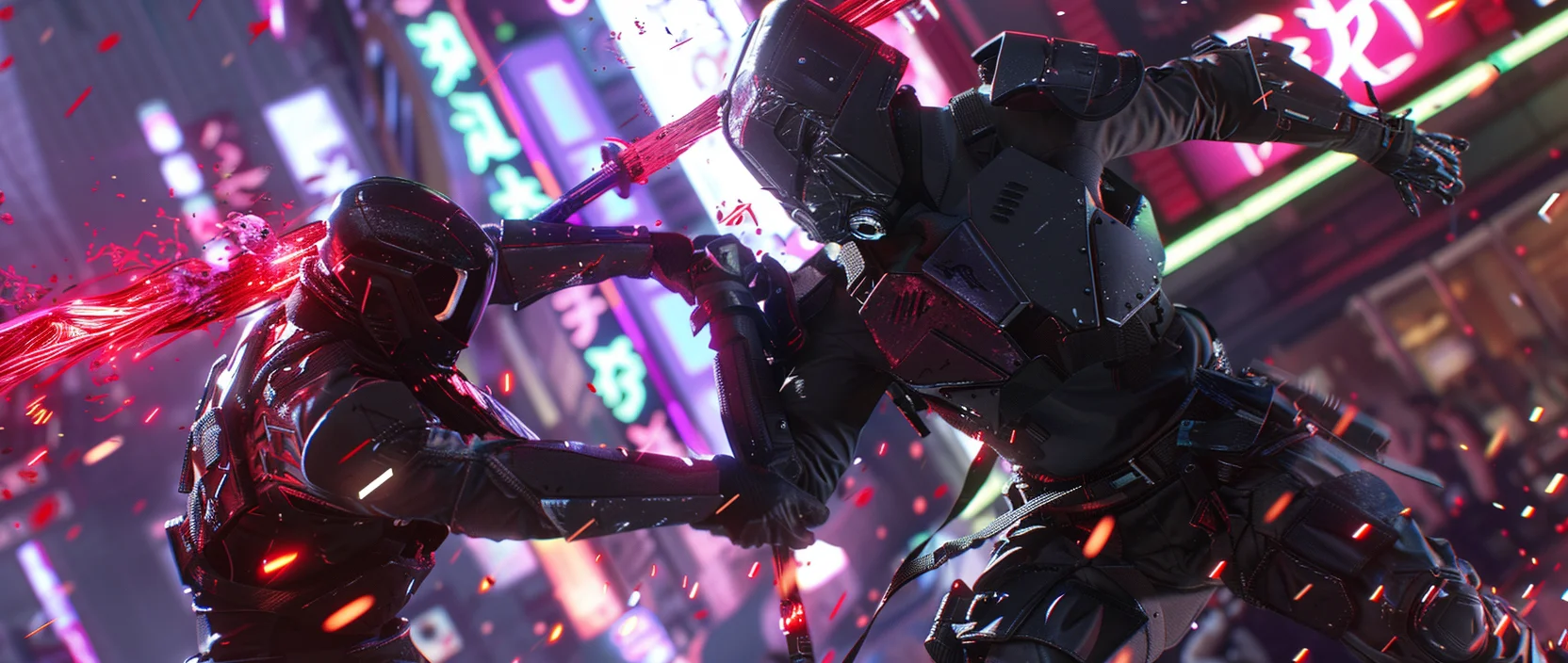Shadow War is a strategic Web3 game featuring a tactical combat system, character progression, and complex social dynamics. Players enter a dystopian cybernetic world where powerful factions battle for influence, resources, and ideological dominance. Unlike simple Play-to-Earn models, Shadow War embraces a Play-and-Own approach, where valuable assets gain meaning through skill, strategy, and in-game decision-making. This makes the game not only a form of entertainment but also a dynamic ecosystem shaped directly by player interaction.
Contents
- The World of Shadow War and the Foundations of Conflict
- Gameplay, Role Mechanics, and Strategic Interaction
- NFT Assets, Factions, and In-Game Identity
- Economic Model and Tokenization in Shadow War
- Community, Clans, and Long-Term Development
- Conclusion

1. The World of Shadow War and the Foundations of Conflict
The events of Shadow War unfold in a dark techno-futuristic setting, where the global order has collapsed under the pressure of corporate warfare and information dominance. The world is divided between several powerful factions, each pursuing its own vision of the future. Players choose their allegiance based not only on gameplay style but on ideological alignment, creating a deeper emotional investment.
Conflicts in Shadow War are not limited to direct combat. Economic pressure, logistical control, espionage, and diplomacy can be equally decisive. The world continuously evolves based on player decisions, making every campaign unique and dynamic. Control over data becomes a critical factor — information is more valuable than currency, and secret intelligence can determine the outcome of entire wars. The visual tone reinforces a world of hidden struggle, where technology, cybernetics, and shadow politics intertwine.
2. Gameplay, Role Mechanics, and Strategic Interaction
The gameplay is grounded in turn-based tactics, resource management, and character specialization. Each hero has unique attributes, abilities, and combat roles, enabling diverse tactical strategies. Success in battle depends on situational awareness, positioning, and anticipating the opponent’s decisions.
Outside of combat, players build networks of influence: managing bases, securing territories, gathering intelligence, and negotiating with others. This multi-layered gameplay ensures that victory can be achieved not only through brute force but also through economic maneuvering and informational dominance. Multiplayer interactions enhance the sense of a living world, where the decisions of one faction can shift the balance of power for everyone. Shadow War blends fast tactical engagements with long-term strategic planning.
3. NFT Assets, Factions, and In-Game Identity
The NFT system in Shadow War is designed as the foundation of personal identity and strategic power, rather than simple collection or visual aesthetics. Each NFT asset plays a functional role in the game.
- Hero (NFT Character) – Defines combat style and strategic role.
- Equipment and Weapons – Affect attack, defense, and support capabilities.
- Vehicles and Mobile Bases – Unlock new zones and tactical mobility options.
- Faction Tokens – Represent ideological allegiance and influence social relationships.
Every NFT has its own development potential and evolves over time. This deepens the emotional attachment to one’s heroes and assets. Faction alignment determines access to technologies, missions, and cooperative strategies. Thus, NFTs are not just collectibles but functional elements of strategic and social power.

4. Economic Model and Tokenization in Shadow War
The economic foundation of Shadow War follows the Play-and-Own model, where the value of assets emerges from their in-game utility. Instead of passive earning, the economy incentivizes participation, planning, and political engagement. Assets influence tactical choices, faction diplomacy, and territorial control, ensuring that value is tied to meaningful gameplay. The table below outlines the core elements of the in-game economy:
| Economic Element | Role | Use Case |
|---|---|---|
| Main Token | Currency and in-game utility asset | Purchasing upgrades, event participation, trade |
| NFT Heroes | Strategic and combat foundation | Determine tactical roles and effectiveness in missions |
| Faction Assets | Control and influence | Territorial governance and coalition participation |
Economic balancing responds to player activity and market conditions. Limited supply, token-burning mechanisms, and event-based resource flow help prevent inflation and preserve long-term value. Trading hubs and faction markets play a central role, where demand arises from real in-game behavior. The economy encourages strategic engagement rather than extraction.
5. Community, Clans, and Long-Term Development
The community is the core of Shadow War. Players form clans, negotiate alliances, and participate in coordinated operations. Developers maintain active communication through governance proposals, test sessions, and balance discussions. These interactions shape the world much like real geopolitical dynamics.
Social organization influences the game just as much as combat. Clans can dominate regions, control resources, and dictate faction policies. Over time, governance will partially transition to a DAO structure, granting players real influence over game development. This model supports the possibility of a multi-year evolving universe driven by shared leadership.
6. Conclusion
Shadow War demonstrates how Web3 gaming can merge strategic depth, social complexity, and digital ownership. The game creates an ecosystem where influence is determined not just by combat power, but by intelligence, coordination, and ideological alignment. This encourages long-term engagement and gives players meaningful impact on the world they inhabit.
Additionally, internal politics, diplomacy, and resource distribution create continuous tension that requires thoughtful collaboration. Players are not merely participants — they shape a living digital civilization with its own laws, alliances, and conflicts. As a result, Shadow War becomes more than a game: it evolves into a self-sustaining social and strategic environment, driven by its community.




